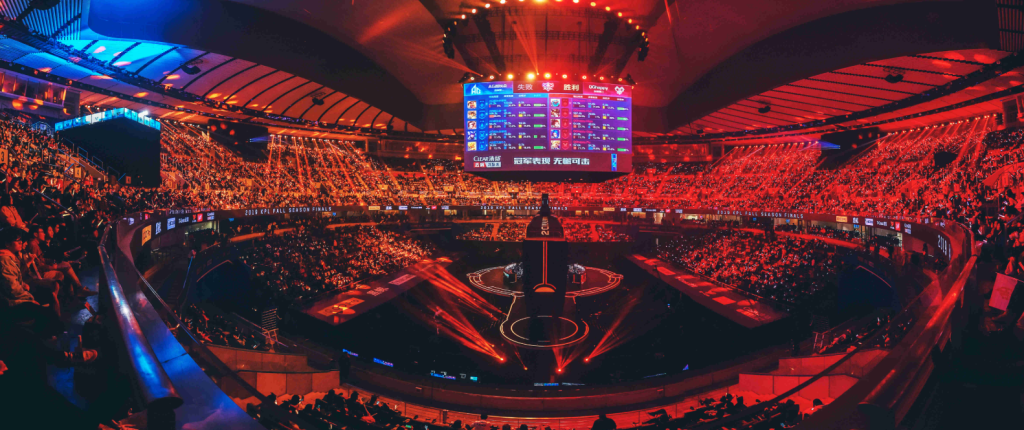
When you hear about esports broadcast rights, it might sound like some high-level business jargon. But beneath it lies a fascinating commercial game of its own. Picture this: George is sitting in a cozy café in New York, laptop open, streaming the League of Legends World Championship. Next to him is his favorite latte and some cookies. George isn’t just a casual viewer; he’s an esports investor, keeping a close eye on the business moving behind the scenes of the game.
Why is broadcast rights such a big deal? Because these rights are like a golden ticket—whoever holds them gets to deliver the event to millions around the world and make serious money doing it. Take Twitch or YouTube Gaming, for example. They shell out hefty sums to acquire these rights, attracting millions of gamers to watch live. What’s more, esports viewers tend to be young, interactive, and highly engaged, which adds massive value to the broadcast rights compared to traditional sports.
At its core, the business model behind esports broadcast rights is pretty straightforward: content licensing plus multi-channel monetization. Event organizers—Riot Games or Valve, say—own the competition rights. They sell or license these rights to streaming platforms or TV channels. The platforms then leverage their huge user bases to earn money through ads, subscriptions, merchandise, and sponsorship deals.
Here’s a real-life example: Kate, an esports fan living in London, shared how she became a paying subscriber to a streaming platform. Whenever she wants to catch behind-the-scenes content or pro commentary during The International Dota 2 Championships, she pays a small fee to get better video quality and an ad-free experience. Kate says this makes her feel less like a passive viewer and more like part of the event. Multiply that by thousands of paying users, and suddenly you see a big chunk of revenue streaming into these platforms.
For event organizers, broadcast rights are their “first-class ticket” to revenue. Beyond selling rights, they can host offline events, launch merchandise, and sell in-game virtual goods—creating a multi-dimensional income stream. Just last year, one major esports tournament generated over $100 million from broadcast rights alone.
Streaming platforms pull revenue from multiple sources stacked together: traditional advertising remains a stable foundation. Advertisers love esports because of the sharp, young audience it delivers, and they’re willing to pay top dollar to reach them. Subscription fees bring in steady income—Kate and her fellow subscribers keep that cash flow consistent. Then there’s virtual gifting and donations in chat rooms, where both streamers and platforms get a cut, fueling even more viewer spending.
An especially interesting piece of the puzzle is data monetization. Platforms analyze viewing habits and interaction patterns to offer advertisers highly targeted campaigns. This data-driven approach outperforms traditional TV ads, directly increasing the value of broadcast rights.
Despite this booming industry, challenges remain. Fierce competition over rights sometimes leads to confusion or fragmentation, causing viewers to drop off. Cross-border regulations and cultural differences complicate copyright enforcement. And then there’s the ever-present viewer expectation for free content—finding the sweet spot between free and paid offerings continues to test platform operators.
I remember watching a tournament at an esports bar in Los Angeles with my friend Jack. He admitted he’s reluctant to pay for streams because “free is enough,” but he also acknowledged the premium experience paid users get. This attitude sums up a lot of esports fans’ mindset: free content is the hook; paid content adds value. Balancing these two is crucial for the sustainability of the broadcast business.
From George’s investor perspective, the future of esports broadcasting looks bright and innovative. Imagine immersive VR viewing experiences or blockchain-based copyright tracking that makes monetization smoother. Plus, niche regional tournaments may gain their own streaming platforms, catering to diverse audience segments.
In the end, esports broadcast rights boil down to controlling content and monetizing it through multiple channels. The event organizers, streaming platforms, and viewers form a value triangle. Just like George and Kate in that café or London flat, their viewing and paying habits quietly power the growth of an entire industry. And as esports continues to explode worldwide, the story behind those broadcast rights is only going to get more exciting.
![]()


